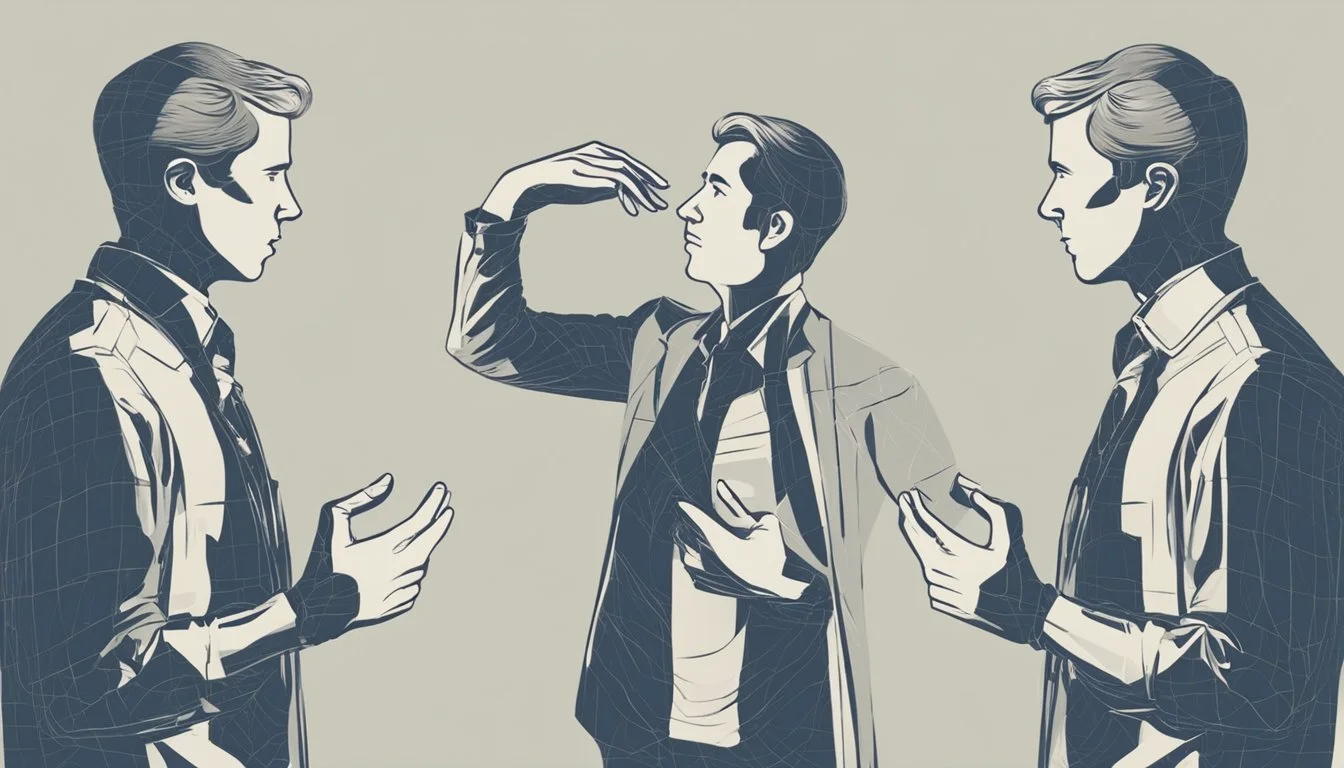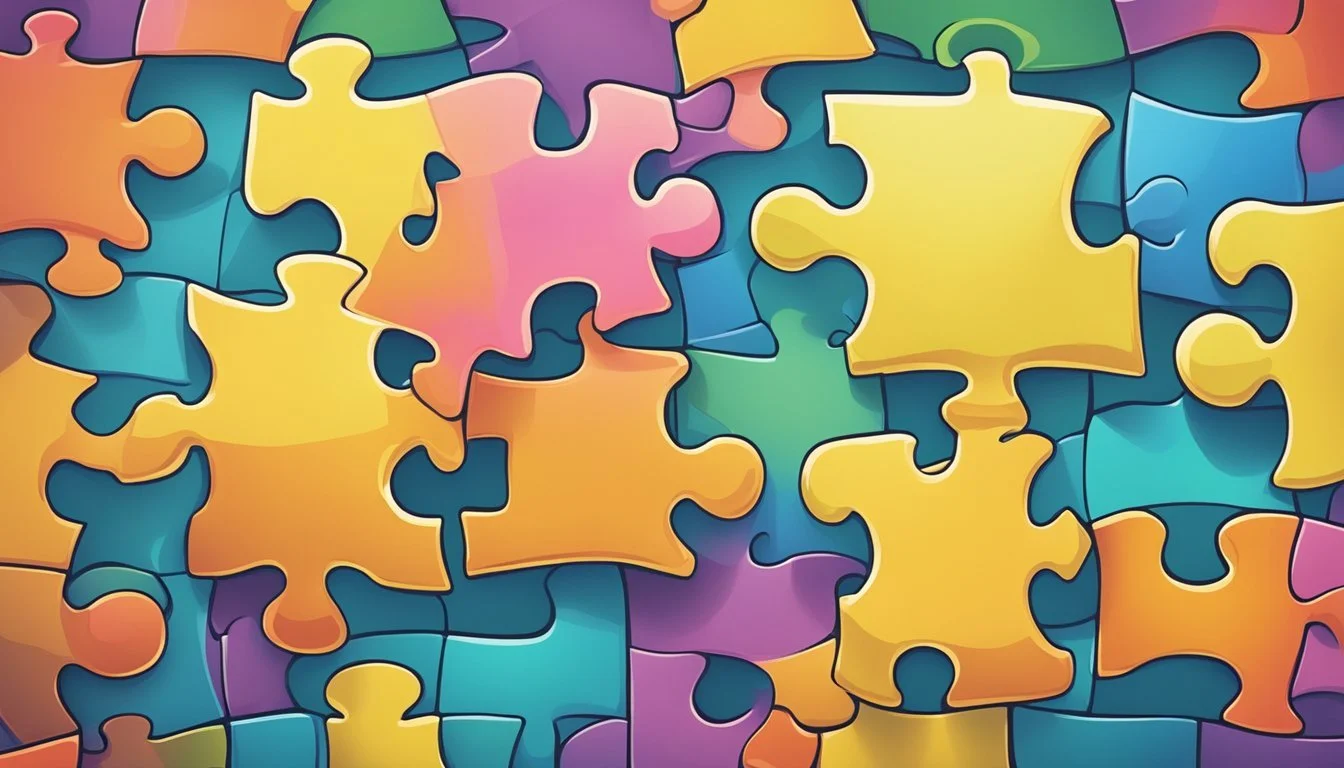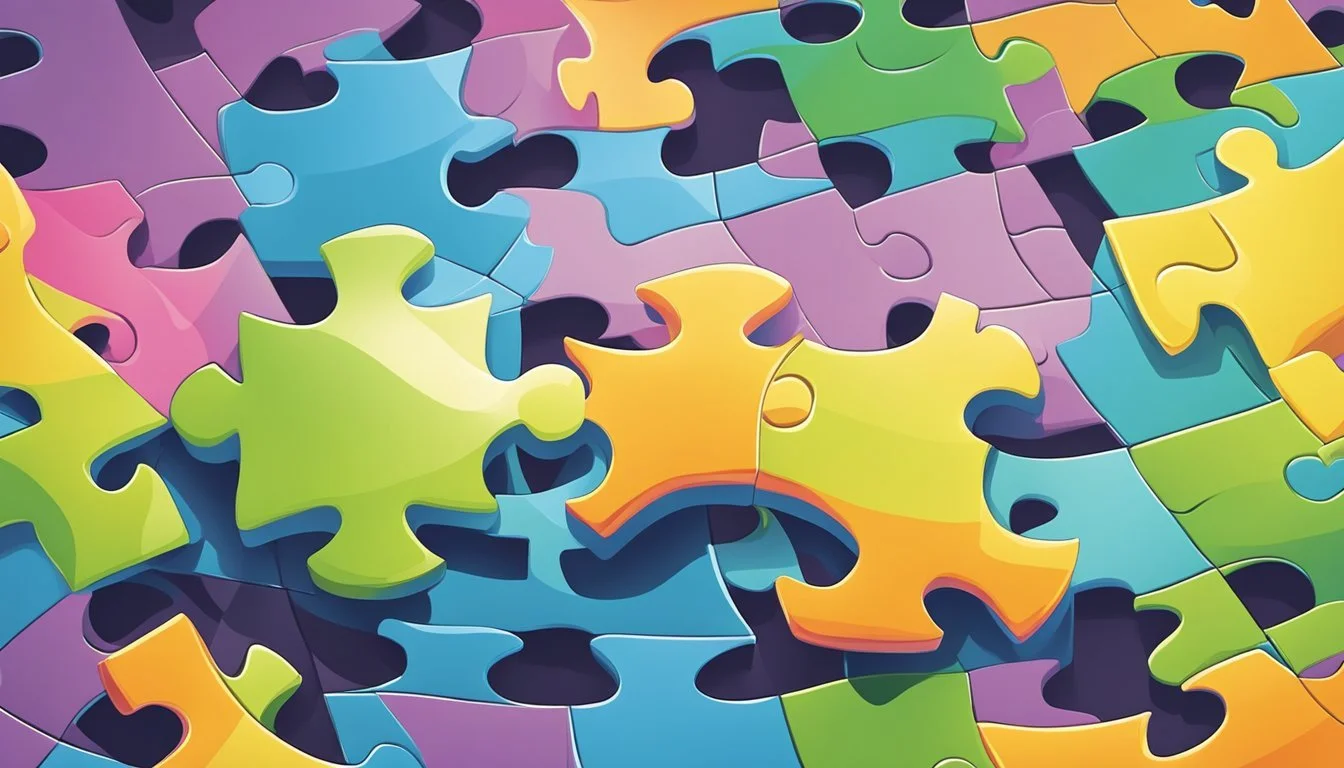11 Signs You and Your Best Friend are Basically the Same Person
Unbreakable Bonds Revealed
Friendships can be some of the most powerful relationships in our lives. When two people share an unbreakable bond, it can often feel like they are essentially the same person.
These unique connections transcend superficial similarities and delve into the deeper aspects of understanding and shared experiences. What are the signs that you and your best friend are practically the same person? This article explores the most telling indicators of such a close-knit friendship.
1) You Finish Each Other's Sentences
When two people are incredibly close, they often start finishing each other's sentences. This phenomenon is a strong indicator of a deep connection and understanding. It suggests they have spent so much time together that they almost instinctively know what the other person will say.
This behavior is common among best friends who have shared numerous experiences and conversations. They can predict each other's thoughts and words, creating a seamless and almost telepathic communication.
Finishing each other's sentences can also happen due to similar thought processes and shared perspectives. When two people think alike, their responses and reactions are often aligned.
For many, this serves as a testament to the strong bond they share. It's not just about knowing someone well; it's about being in sync on a level that words can't always express.
Such interactions strengthen the relationship, reaffirming that they are on the same wavelength. This unique form of communication reflects the depth and intimacy of their friendship.
2) You share identical tastes in music
Having the same taste in music can be a significant sign of a deep connection. When two individuals enjoy the same genres, it can enhance their bond and provide common ground for interaction.
Listening to music together can be a joyful shared experience. Whether it's attending concerts or simply enjoying playlists at home, these moments create lasting memories. It's easier to connect with someone who appreciates the same beats and rhythms.
According to Psychology Today, musical preferences are often tied to personality traits. This means that friends with similar tastes in music might have more compatible personalities.
In relationships, sharing musical interests can make date nights and road trips more enjoyable. As Glamour highlights, not having the same taste could mean enduring live performances that one might not enjoy.
The similarity in musical preferences can foster a strong emotional connection. Music often evokes emotions, and sharing these moments with someone who feels the same way can bring people closer.
3) You have the same sense of humor
A shared sense of humor is one of the strongest indicators that two people are in sync. If you and your best friend laugh at the same jokes and enjoy the same comedic styles, it highlights a deep level of compatibility.
Both of you might favor affiliative humor, which involves cracking jokes and engaging in banter to strengthen your bond. Alternatively, you may enjoy self-enhancing humor by laughing at yourselves and the absurdities around you, effectively lightening the mood in stressful situations.
You both likely steer clear of aggressive humor, which relies on sarcasm, criticism, and teasing that can damage relationships. Instead, your humor promotes positivity and connection, which is key to a healthy friendship. For example, sharing memes or situational comedy reinforces your unique bond.
Having the same comedic preferences means you intuitively know what will make the other laugh. This mutual understanding can create an unspoken language, making your communication seamless and enjoyable. It also suggests that you both value and process humor similarly, an important aspect of emotional intelligence.
4) You understand each other's facial expressions
Best friends often develop an uncanny ability to read each other's facial expressions. This skill goes beyond just recognizing a smile or a frown. They can detect subtle changes in their friend's face that convey deeper emotions like concern, joy, or frustration.
Facial expressions are a critical component of nonverbal communication. Microexpressions, which are brief, involuntary facial expressions, can reveal genuine emotions. Friends who truly understand each other can pick up on these microexpressions and respond appropriately.
When you share a close bond, you become attuned to each other's nonverbal cues. This can help in avoiding misunderstandings. For example, a slight raise of the eyebrow might indicate skepticism that only a best friend would notice.
This awareness strengthens the relationship, making interactions smoother. It also means that they can communicate without words, using only glances and expressions to convey entire conversations. Understanding nonverbal signals like these can make communication more efficient and meaningful.
For more insights on interpreting nonverbal cues, visit the Definitive Guide to Reading Facial Microexpressions or explore ways to read body language better.
5) You can communicate without words
Understanding each other without words is a clear sign of a deep bond. This occurs through nonverbal cues like facial expressions and body language, which can convey emotions and thoughts effectively. For instance, a simple glance can indicate agreement, concern, or joy.
Twin souls might frequently use gestures to communicate. These could be unique to their friendship and understood only by them. This type of silent communication strengthens their connection.
Vocalics, or paralanguage, is another form in which they might communicate nonverbally. Changes in pitch, volume, or tone can express a variety of emotions and intentions without needing to use words. This nuanced understanding of each other's vocal cues fosters a deeper level of interaction.
They often know when something is wrong without needing to ask. This intuitive sense comes from their close bond where physical presence and subtle signals communicate more than words could. They can respond appropriately, offering comfort or support just by being there.
6) You have matching thoughts or ideas
They often find that their thoughts or ideas align effortlessly. They may start expressing the same thought at the same time, even finishing each other’s sentences. This uncanny synchronicity signifies a deep connection that goes beyond mere coincidence.
Whether they are deciding on a place to eat or planning a trip, their preferences seamlessly match. There’s no need for lengthy discussions or compromises because their minds are already in tune.
Moreover, they frequently experience those moments when one person thinks of something and the other person mentions it out loud. This unspoken communication shows that their mental wavelengths are perfectly synced.
This link extends to problem-solving too. When faced with a challenge, they instinctively approach it with similar strategies or solutions. Their shared mindset fosters cooperation and makes tackling obstacles together easy.
They also share creative ideas and projects. They easily brainstorm together, building off each other’s thoughts in a fluid, natural manner. This mutual inspiration not only strengthens their bond but also enhances their individual creativity.
7) You Shop for the Same Clothes
She often finds herself browsing clothes and noticing the same patterns, styles, and colors that her best friend loves. When they go shopping together, they instinctively gravitate towards the same racks. Their wardrobes end up looking quite similar.
They have even encountered situations where they accidentally buy identical outfits without planning. It happens often, whether while shopping online or in physical stores.
Their friends and family sometimes playfully tease them about looking like twins. Despite any playful remarks, they enjoy having similar tastes since it makes borrowing clothes from each other effortless. Shopping together creates an enjoyable bond for both of them.
8) You have the same favorite foods
They share a love for the same foods, making meal planning effortless. Whether it's sushi, pizza, or a particular homemade dish, their taste buds align perfectly.
This synchronicity extends to snacks and beverages too. They both crave the same type of doughnuts or coffee, often surprising each other with favorite treats spontaneously.
When dining out, there's never an argument about where to go. Both know their preferred spots and are excited to try the newest food trends together. Their food adventures become a shared experience that only strengthens their bond further.
Food prep and sharing recipes also play a role. They enjoy cooking for each other, trying new recipes, and providing constructive feedback. This shared culinary interest not only satisfies their appetites but also enriches their friendship.
9) You travel together frequently
Traveling with a best friend can be a unique bonding experience. When two people enjoy each other's company so much that they choose to explore new places together regularly, it says a lot about their compatibility. This frequency of travel together indicates a mutual desire to create shared memories.
Frequent travel requires coordination and compromise. Friends who travel together often have likely developed a strong understanding of each other's preferences, whether it’s about accommodation choices or dining options. This level of harmony in decision-making showcases how similar they are.
Another sign is how effortless the planning process becomes over time. Friends who travel together frequently know each other's travel styles, budget constraints, and must-see spots. This kind of synchronization is not only efficient but also highlights their alignment in many aspects.
Shared experiences on the road strengthen their bond. From navigating foreign cities to enjoying spontaneous adventures, these moments only reinforce the similarity in their outlook and interests.
Additionally, facing the challenges of travel together, such as flight delays or language barriers, tests and proves their resilience as a team. Frequent travelers often come out of such situations with a stronger connection and more mutual respect. You can find more insights on these dynamics on how to travel with your best friend.
10) You know each other's secrets
A hallmark of a deep friendship is the sharing of secrets. True friends confide in each other without hesitation. They trust that their vulnerabilities will be respected.
Sharing personal details creates a strong bond. It shows that they feel safe and understood. This mutual exchange is a cornerstone of close friendships.
Not only do they share secrets, but they also remember them. This is a sign of genuine care. It demonstrates that the details of each other's lives are important.
Friends who know each other's secrets often provide emotional support. They offer a shoulder to lean on during tough times. This unwavering support fosters a deeper connection.
Confidence in sharing secrets also signifies loyalty. Friends trust that their private information will remain confidential. This trust cements the foundation of their relationship.
The ability to share and respect secrets is crucial. It reflects the trust and depth of the bond. A friend who keeps secrets highlights the significance of their relationship.
11) You give similar advice
When two people spend a great deal of time together, they often begin to think alike.
Best friends who are basically the same person tend to offer advice that echoes each other's thoughts and values.
They find themselves suggesting the same solutions to problems, even before knowing what the other is going to say.
This similarity in advice can stem from shared experiences and perspectives.
For instance, if both friends have faced similar situations, they’re likely to draw from those experiences to offer consistent guidance.
Their advice might also reflect common goals and beliefs that they’ve developed over time.
Friends who are in sync this way might also notice that they frequently finish each other’s sentences.
They might laugh at how often their suggestions align, realizing just how similar they have become.
This alignment is often comforting, reinforcing their bond and mutual respect.
Recognizing this pattern can be both amusing and reassuring.
It highlights the strong connection between them and the unique understanding they have of one another’s lives and challenges.
The ability to give similar advice indicates a deep level of mutual comprehension and empathy.
Psychological Explanation
Close friendships often exhibit shared personality traits and common interests, creating a deep connection that makes it feel as though best friends are almost the same person. These aspects can be understood through psychological principles.
Shared Personality Traits
Best friends frequently share similar personality traits. This similarity fosters a sense of understanding and ease when interacting. Research suggests that friendships are often formed based on comparable levels of extraversion, agreeableness, and openness to experience.
This mirroring of traits can also contribute to synchronized thinking patterns and emotional responses. It enhances empathy, making it easier for friends to support each other during emotional experiences because they process emotions in similar ways.
Common Interests and Hobbies
Having common interests and hobbies further strengthens the bond between best friends. Engaging in shared activities, such as watching movies or participating in sports, builds a foundation for regular interaction and mutual enjoyment. These common pursuits provide opportunities for collaboration and shared experiences.
Studies indicate that sustaining these joint activities over time contributes to the longevity of the friendship. This mutual engagement ensures that both parties remain invested in the relationship, continually reinforcing their connection through enjoyable and meaningful experiences.
By focusing on these psychological aspects, the profound synchronicity often observed in close friendships becomes clearer.
Impact on Mental Health
Having a best friend who is basically the same person as you can have significant impacts on your mental health, particularly in terms of emotional support and stress reduction.
Emotional Support
A best friend who mirrors your traits can provide unparalleled emotional support. Sharing similar experiences and perspectives allows both individuals to understand and validate each other's feelings effortlessly. They can offer advice that resonates deeply because it's grounded in mutual understanding.
This kind of relationship fosters a safe space for vulnerability, making it easier to share fears and frustrations without fear of judgment. Emotional support from such a friend can mitigate feelings of loneliness and isolation.
In times of crisis, having someone who truly "gets you" can be immensely comforting. They are not just companions but emotional anchors, boosting resilience and mental fortitude. This emotional support can play a critical role in maintaining mental stability and promoting overall well-being.
Stress Reduction
Friendships where individuals are very similar can also be powerful stress reducers. When stressors arise, having someone who thinks and reacts like you can simplify problem-solving and ease stress. They can offer practical solutions and strategies that align closely with your way of thinking.
Additionally, the shared sense of humor and mutual interests allow for enjoyable distractions from stress. Engaging in favorite activities together provides a break from daily pressures and promotes relaxation.
Being with a best friend who mirrors you creates an environment where you feel understood and accepted, which can significantly lower stress levels. This sense of mutual comfort and ease reinforces mental health by reducing the emotional and physical impacts of stress.
Maintaining Individuality
Maintaining individuality within a close friendship requires setting clear boundaries and encouraging each other's personal growth. These practices ensure that both friends can thrive independently while still enjoying a strong bond.
Setting Boundaries
Setting boundaries involves respecting personal space and understanding limits. Healthy boundaries help maintain respect within the friendship. This means agreeing on what is comfortable to share and what should be kept private. It's also important to balance time spent together and apart.
Healthy communication about limits helps prevent misunderstandings. Friends should feel safe expressing when they need space or time alone. It ensures the relationship remains supportive without becoming overwhelming.
Encouraging Personal Growth
Encouraging personal growth involves supporting each other's interests and goals. This means celebrating achievements and providing encouragement for new endeavors. Friends should motivate one another to pursue hobbies, studies, or career opportunities.
Supporting personal growth also involves recognizing the need for independence. This could mean respecting time commitments or encouraging each other to try new activities alone. The friendship thrives when both individuals can grow independently.













